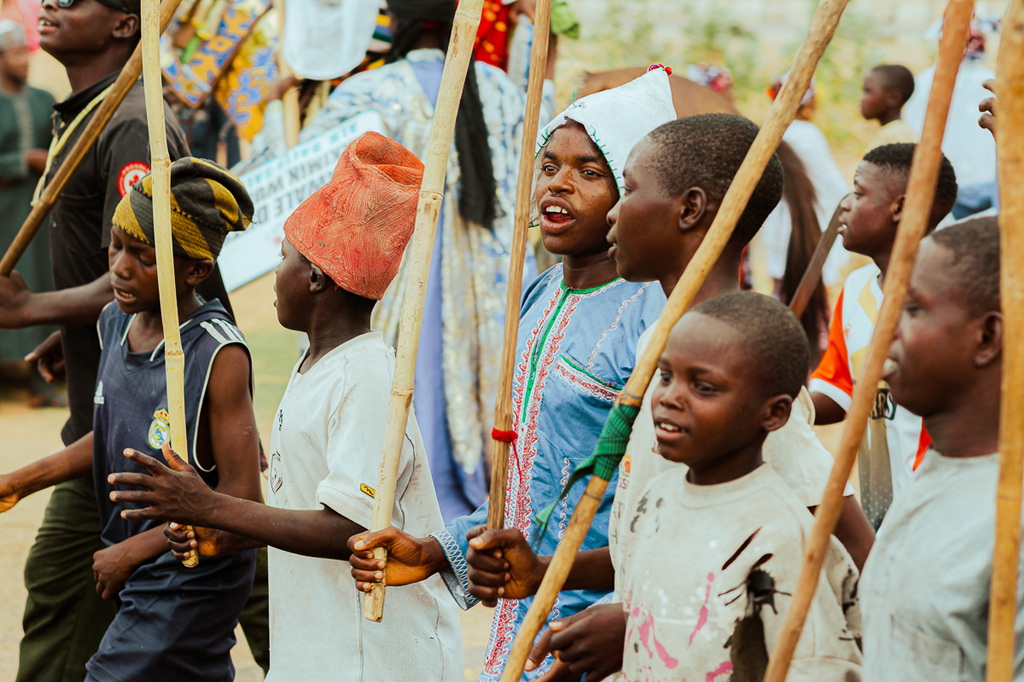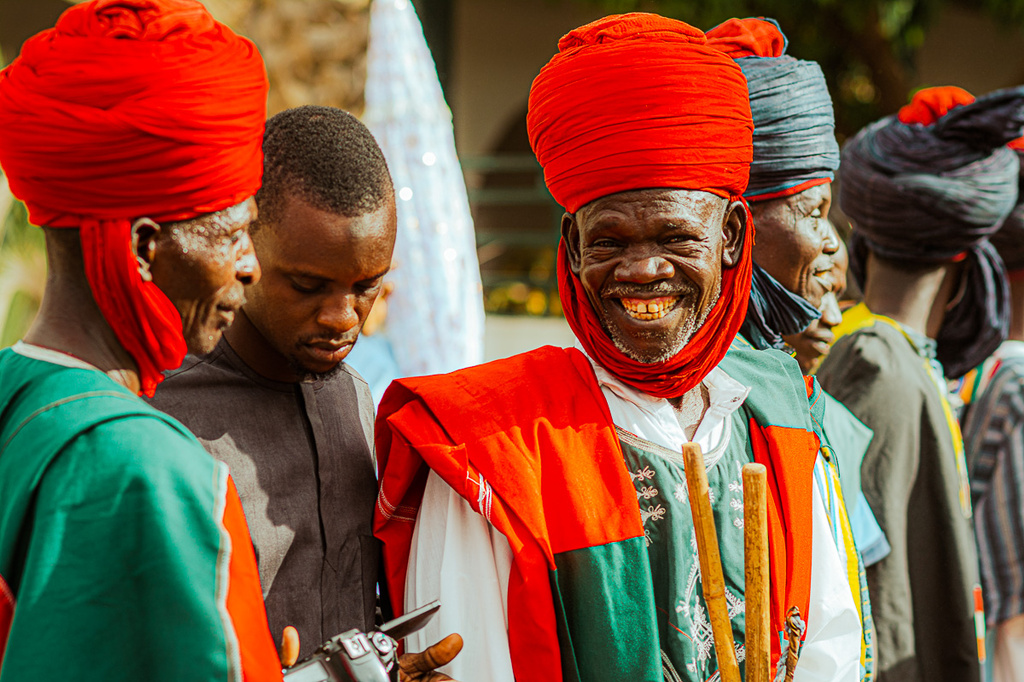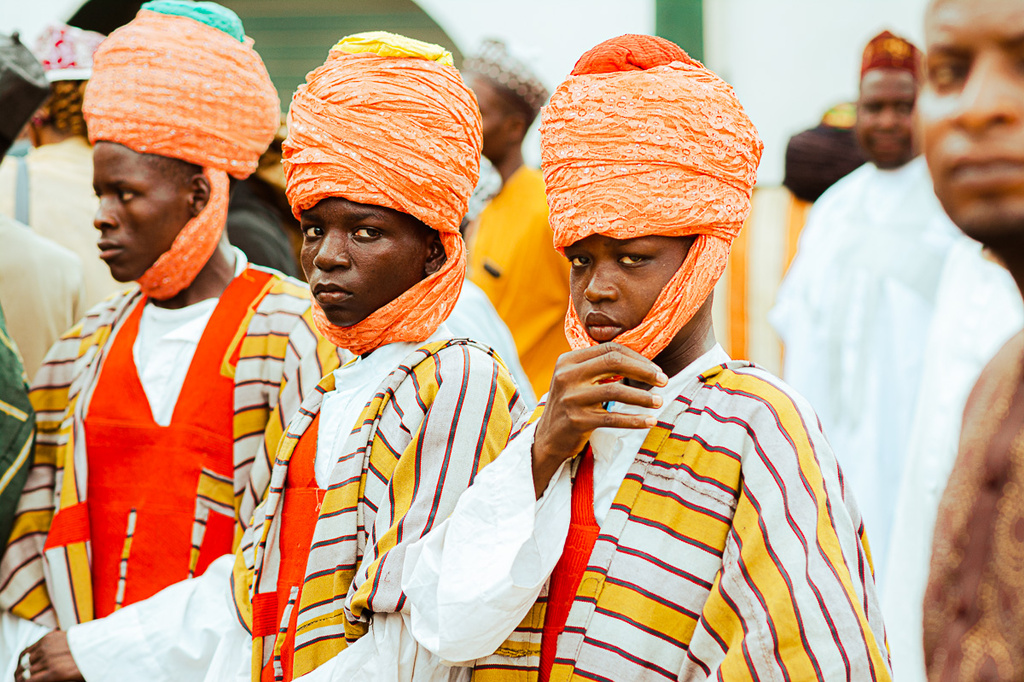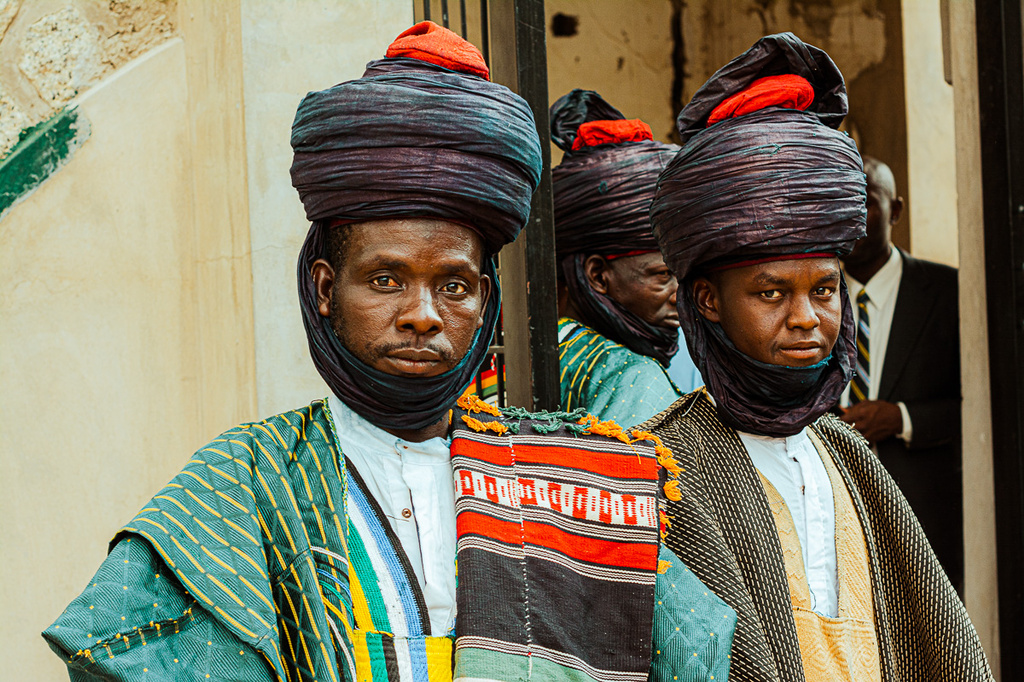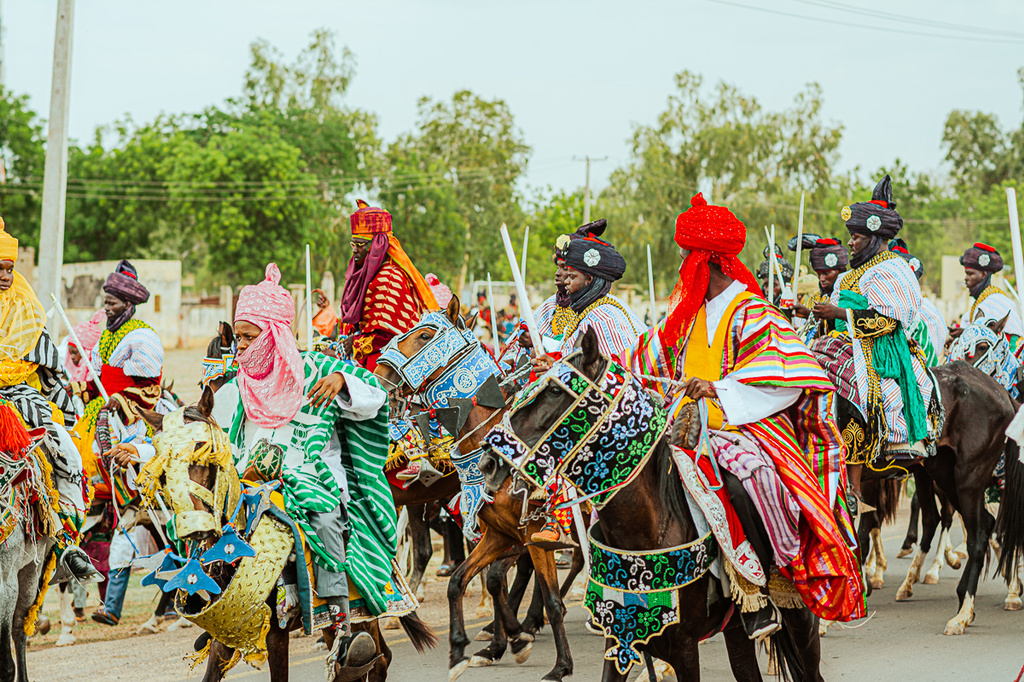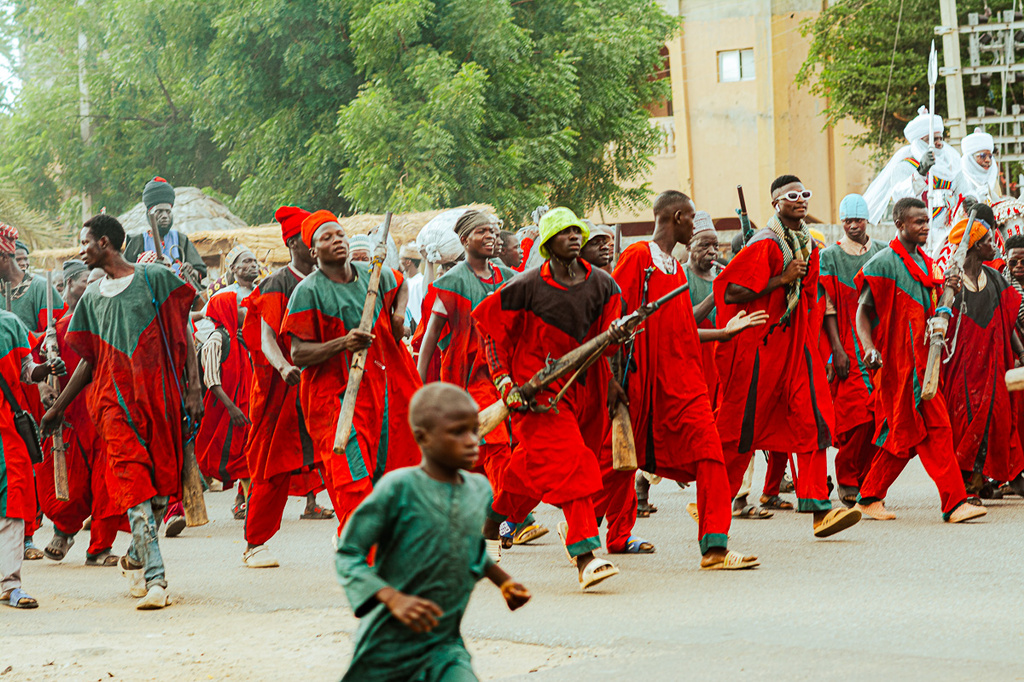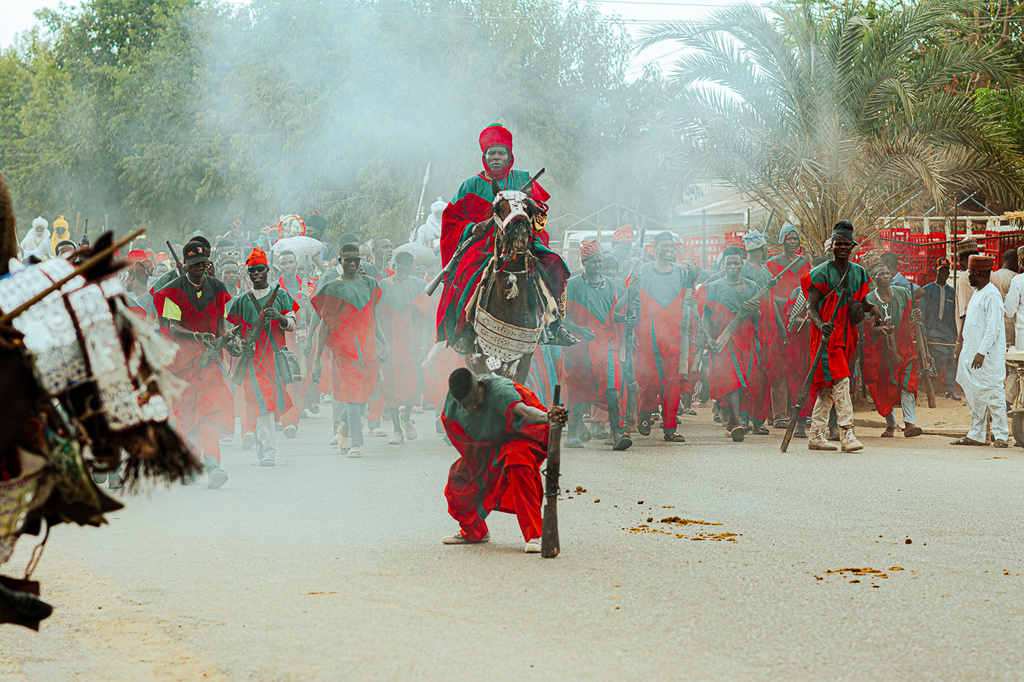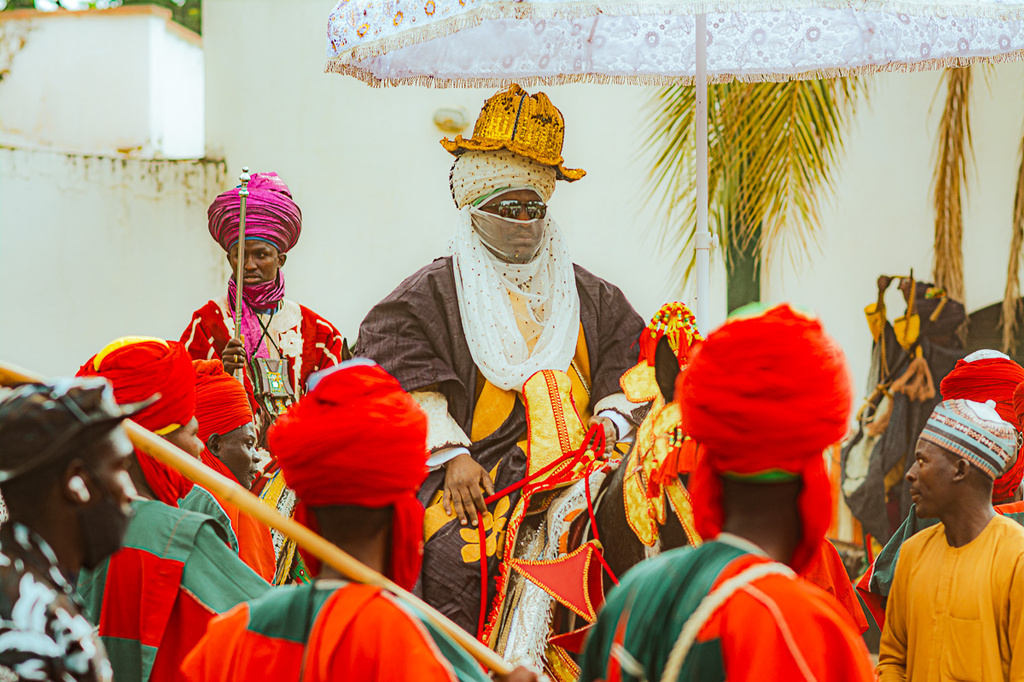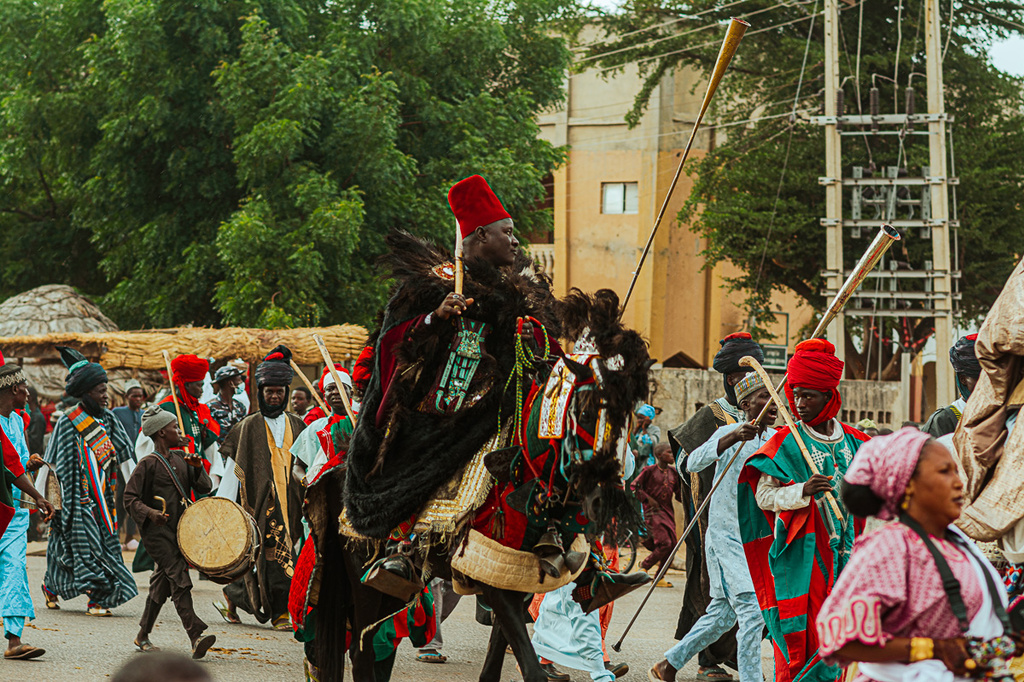
Emmanuel Solate heralds the revival of the Durbar festival in Kano, northern Nigeria.
For many decades, the Kano Durbar has been the most iconic equestrian festival in Nigeria. Steeped in centuries of tradition and royal pageantry, it was the cultural heartbeat of Northern Nigeria. However, a power tussle in 2024 and 2025 between the reinstated Emir of Kano, Muhammadu Sanusi II and his cousin, Emir Aminu Ado Bayero, who was dethroned, has halted the celebrated festival, casting uncertainty over its future. Ironically, this disruption has allowed other Durbar celebrations in Jigawa State (Northwest Nigeria) and Ilorin (North Central Nigeria) to step into the spotlight, showcasing their own unique heritage and rich pageantry to the nation—and the world at large.
Kano Durbar: A Royal Spectacle Interrupted
The Kano Durbar has historically been a majestic convergence of faith, tradition, and power. Timed around Islamic festivities like Eid al-Fitr and Eid al-Adha, it brings together thousands of horsemen, palace guards, titleholders, musicians, and cultural performers in a grand display of loyalty to the Emir.
Notably, the Kano Durbar is distinguished by the Hawan Daushe and Hawan Nasarawa processions, drummers on dromedaries who only perform in front of the Emir, the presence of the Hyena Men—mystical performers whose acts blend folklore with danger and richly adorned horses and elite warriors parading in regalia dating back to the days of the Sokoto Caliphate. All these and many more attracted Kano indigenes, Nigerians and International tourists to experience the Northern warmth and cultural splendours.
However, the 2024 and 2025 editions suffered setbacks due to the ongoing royal dispute between Muhammadu Sanusi II and Aminu Ado Bayero. The police and residents of Kano believed that royal dispute may bring about an altercation or riots between the loyalists of the two Emirs, which may further lead to chaos and worsen the silent crisis. With the Durbar festival suspended in Kano, attention has turned to other regions where the Durbar continues to thrive.
Jigawa Durbar: A Cultural Renaissance
Incidentally, Jigawa State was carved from the old Kano State in 1991. The State has quietly nurtured its own version of the Durbar in the shadow of the grandeur of the Kano Durbar. In the wake of Kano’s absence, Jigawa’s Durbar has surged into the national consciousness. It is now positioning itself as the new cultural capital of Northern Nigeria, with renewed pride and strategic vision.
Despite being in existence for many decades, in a very short space of time, Jigawa Durbar has bagged some medals with incredible speed, these include:
- UNESCO Recognition: The Durbar was recently added to UNESCO’s list of Intangible Cultural Heritage, drawing international attention.
- Revitalisation of Palace Culture: With full support from local authorities and traditional rulers, Jigawa’s emirates have ramped up the quality and frequency of cultural displays.
- Youth Inclusion: Young horsemen, griots, and artisans are given a platform, ensuring continuity and evolution.
According to the Emir of Dutse, the Jigawa state capital, Emir Hameem Nuhu Sunusi, “Once UNESCO recognises you, it means you will be known all across the world.”
The Jigawa Durbar, like other Durbars in Nigeria, is held twice a year, on the Eid al-Fitr and Eid al-Adha holidays in the Islamic calendar. The Durbar procession on the 31st of March, after Ramadan fasting concluded, with Governor Umar Namadi receiving the Emir and his entourage at his office, as enthusiastic spectators climbed baobab trees for a better view. Seated beside the governor, Emir Sunusi was paid homage by his 26 district heads, who performed traditional obeisance.
Each district presented uniquely adorned horses and riders, reflecting the emirate’s cultural diversity. According to Wada Alhaji, the Emir’s Chief of Staff, the variety in decorations symbolises the rich heritage of the region.
Beyond its pageantry, the Durbar served as a platform for civic dialogue. The Emir used the occasion to highlight pressing issues, calling the government’s attention to erosion and flooding problems and urging expedited work on a new police training college.
Ilorin Durbar: Where Cultures Collide and Coalesce
While Kano and Jigawa’s Durbars are closely tied to Islamic festivals and Fulani-Hausa traditions, Ilorin offers something markedly different—a fusion of cultures and a historical backstory rooted in war and resilience.
The Ilorin Durbar stands out due to what began as a celebration of victory in 1830 when Ilorin fended off an attack from the Oyo Empire and Baruba warriors during Eid morning. Furthermore, Ilorin’s heritage draws from Yoruba, Fulani, Nupe, Hausa, and Baruba lineages; this Durbar celebrates that diversity. However, it incorporates the Royal Procession aspect of other Durbars in the North, featuring a ceremonial march from the Emir’s palace to Kwara Baseball Park in Adewole, accompanied by music, dance, and cheers. Also, Ilorin’s culture is heavily exhibited, from Aso-Oke weaving and Agbede blacksmithing to Dada Pottery and Fulani cuisine. Ilorin offers a more grounded, artisanal experience.
The 2025 Ilorin Durbar, themed “Unity in Diversity,” celebrated the city’s rich cultural and religious heritage, highlighting how Ilorin has harmoniously embraced and unified various ethnic groups — including the Yoruba, Fulani, Baruba, Nupe, Hausa, and Kanuri — for over 200 years. Rooted in Islamic scholarship and traditional customs, Ilorin’s identity as an inclusive Emirate was reaffirmed through symbolic ceremonies and communal activities.
The Durbar served as a reminder of the city’s historical resilience, including its defence during battles like Ita Kudimo and Ita Ogunbo, which forged its unity. The Emir’s public procession, escorted not by security forces but by traditional guards with whips, symbolised deep trust and connection with the people.
This year, Aso-Ebi emerged as a unifying social tool, with families and communities collaborating weeks in advance to create shared identities through fabric and design. Youth participation also stood out, as young people handled media, logistics, and global livestreams, blending tradition with innovation.
Despite some logistical challenges, the festival successfully demonstrated Ilorin’s unique model of peaceful coexistence. As the Emir of Ilorin, Alhaji Ibrahim Sulu-Gambari, returned to the palace, the sense of unity, pride, and anticipation for Durbar 2026 was palpable, reaffirming that Ilorin doesn’t just preach unity; it lives it.
Similarities Across the Three Durbars
The three Durbars featured Equestrian Displays, as Horseback riding remains the central feature, often symbolising strength, dignity, and royal prestige. The Durbar is led by its Emir, reasserting the authority and relevance of traditional institutions, signifying the Emirate’s participation in all aspects of the Durbar. The Durbars enjoyed community support, participation and intergenerational excitement, driving massive attendance. Additionally, in terms of cultural embellishments, such as regalia, music, chants, and ancestral praise, all form core elements of the Durbar’s allure and were extensively featured in all three.
As Nigeria repositions itself for a tourism-driven economy, these Durbar festivals hold untapped potential:
- Cultural Tourism: With improved infrastructure, enhanced media coverage, and strengthened global partnerships, these festivals can become top-tier tourist attractions, comparable to Brazil’s Carnival or India’s Kumbh Mela.
- Economic Empowerment: Local artisans, performers, and food vendors are poised to benefit from increased tourist traffic and global marketing opportunities.
- Diaspora Engagement: The festivals can serve as cultural reunions for Nigerians abroad, offering immersive experiences in their heritage.
- Documentary & Film Opportunities: The stories, regalia, and rituals of the Durbars are ripe for visual storytelling and international broadcasting.
- Peacebuilding and Unity: In regions recovering from conflict, the Durbar can be a valuable tool for fostering pride, peace, and unity.
While Kano’s Durbar grapples with internal crisis, its unintended pause has spotlighted the cultural richness and potential of Jigawa and Ilorin. These festivals, rooted in tradition yet ripe for evolution, have demonstrated that heritage is not tied to a single city. Nigeria’s cultural wealth is decentralised, diverse, and dynamic.
The future of Durbar celebrations lies in collaboration, innovation, and preservation. With deliberate investment and global storytelling, these festivals can transcend national borders and become global symbols of Africa’s enduring traditions.
Durbar is not just a festival—it is Nigeria’s living epic. And the story is only just beginning.

